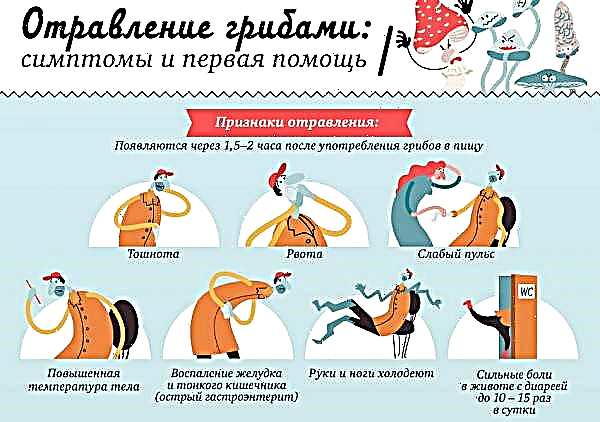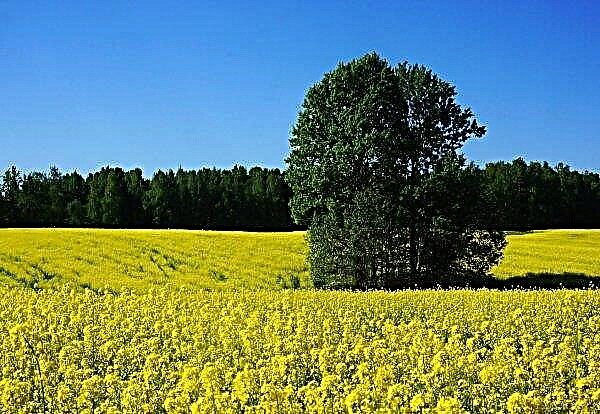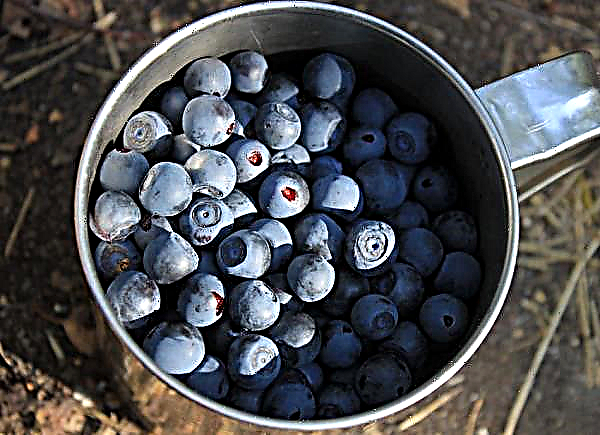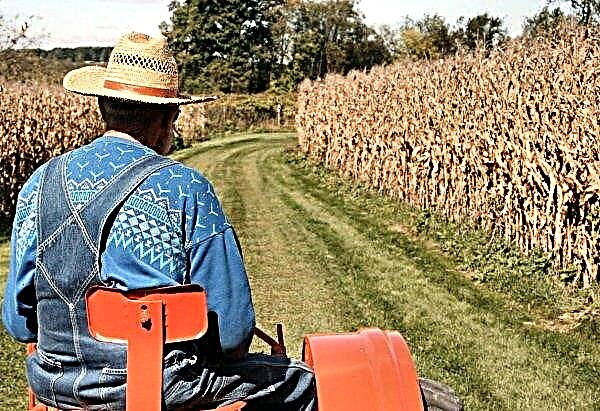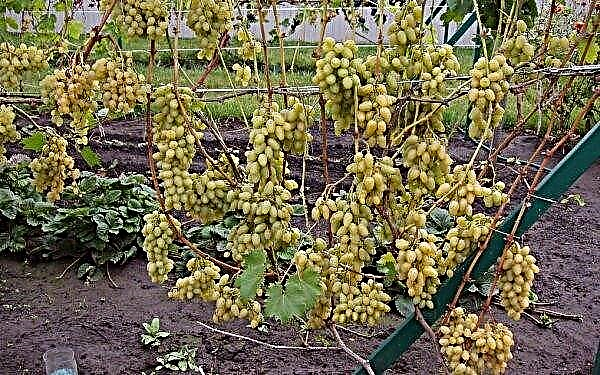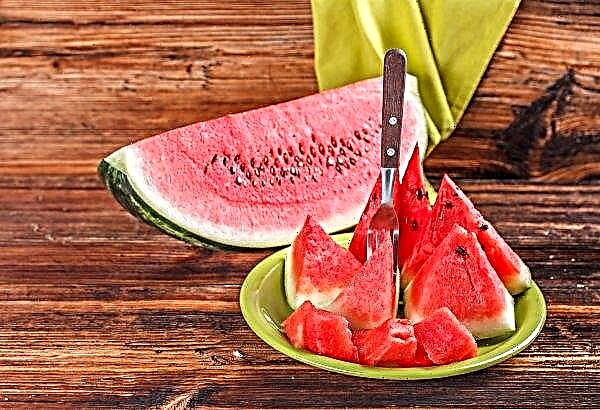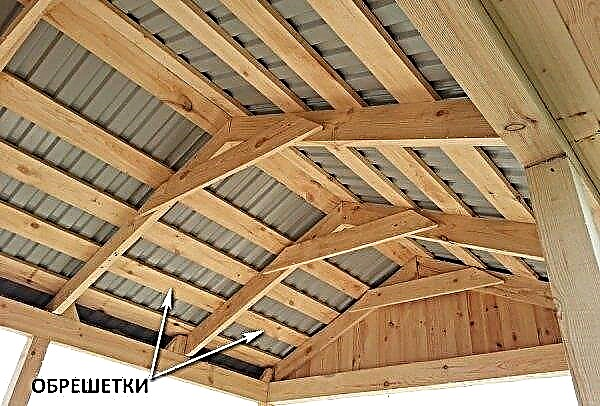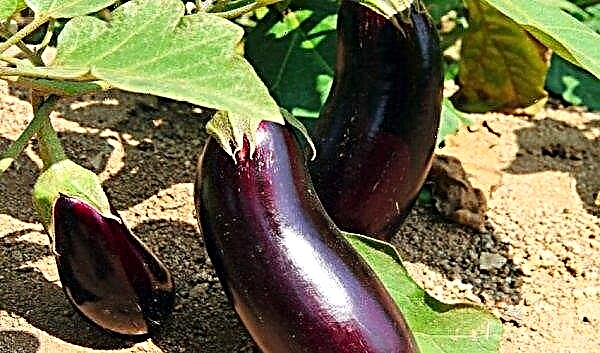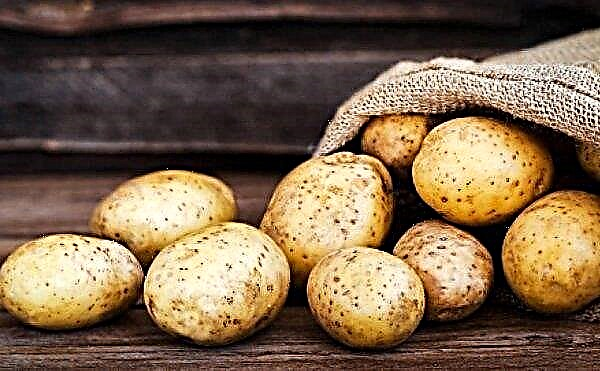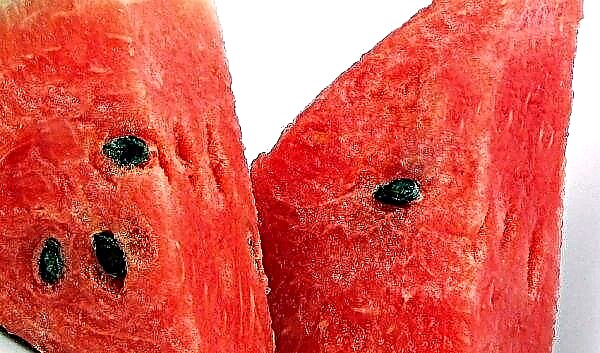The hybrid tomato variety Andreevsky surprise has gained its popularity for good reason. Subject to cultivation technology, it makes it possible to obtain record yields. In addition, the variety is unpretentious, therefore, it can bear fruit both in hot regions and in cold ones, under a film coating. Below are described in detail the main features of the tomato St. Andrew's surprise, as well as the subtleties of its cultivation.
Grade description
Tomato Andreevsky surprise refers to late-ripening and indeterminate hybrids, the plant gives the first full-fledged crop no earlier than 3-4 months after the start of the growing season. The variety has a fairly developed root system of the rod type. The roots develop quickly enough and under favorable conditions can reach a depth of about 2 m. The stem of the plant is erect, powerful and branched, grassy type, saturated green. On the main branches rather large leaves are formed, they are characterized by a dissection into large lobes of 3-5 pieces.
This tomato blooms profusely. Small yellow or pale yellow flowers with a diameter of up to 2 cm are formed on the bush; they gather in characteristic racemose inflorescences. A tomato is considered an optional type of self-pollinator - this means that both male and female pollination organs ripen on one flower.
Distinctive features of the variety:
- powerful and large stalk up to 2 m high;
- large fruits;
- the characteristic form of a bush, consisting of 1-2 main stems;
- the plant has no restrictions in the growth of the bush;
- the fruits ripen perfectly both in open ground and in greenhouses.
Fruit characterization and yield
The yield of the hybrid is quite high, subject to the optimal growing conditions, up to 8 kg of tomatoes can be harvested from 1 m² of plantings. The plant is late-ripening, therefore, the technical maturity of the fruit occurs no earlier than 125-130 days after the appearance of the first seedlings.
The main distinguishing characteristics of tomato fruits Andreevsky surprise:Did you know? After getting to Europe tomato For a long time it was considered a decorative and even poisonous species, since in conditions temperate climate plant growers for a long time could not get the fruit ovary.
- the average weight of one tomato is in the range of 300-600 g, the maximum can reach 800 g;
- the shape of the tomatoes is round, they are slightly flattened in a horizontal position, and also have vertical ribs starting at the tail and ending at the bottom;
- in the phase of technical ripeness, the fruits have a saturated pink color, turning into raspberry tones;
- the flesh has a delicate tomato aroma and a moderate sweetish aftertaste.
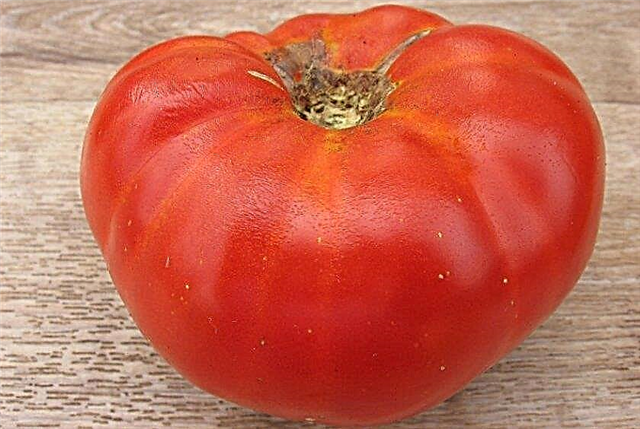
Advantages and disadvantages of the variety
- The main advantages of the hybrid over related varieties of tomatoes:
- can successfully withstand the lack of lighting;
- the bushes are resistant to late blight;
- high yield and large fruit sizes;
- an increased percentage of sugars in the pulp, which gives it a special delicate aftertaste;
- the crop is distinguished by excellent taste characteristics.
- The main disadvantages of the Andreevsky surprise:
- a long growing season, the fruits ripen only at the end of the season;
- excessively large sizes of fruits do not allow to use them for preservation as a whole;
- ripe tomatoes are prone to cracking;
- the bushes are tall enough, therefore, require mandatory garter;
- plants need weekly pinching.
Growing conditions
For the successful cultivation of Andreevsky surprise, plants need to provide standard conditions and microclimate. In addition to optimal lighting and timely fertilizer, the tomato must also choose the right place. To do this, one should evaluate the predecessors, as well as identify the compatibility of neighbors with the culture.
Lighting
Tomatoes belong to the photophilous and heat-loving representatives of the flora: seedlings can be successfully formed at a light day of about 8 hours, however, plants need at least 14 hours to grow and develop normally. The light should be bright and intense throughout the day, this makes it possible to accelerate the growth of green mass and shorten the growing season.
Learn more about other varieties of indeterminate tomatoes:
Temperature and humidity
The temperature of the tomato is also demanding. Seeds begin to germinate at +14 ... + 16 ° С, however, the most favorable period for growth and development for tomatoes occurs only at a range of +20 ... + 25 ° С. At temperatures above + 35 ° C and below + 12 ° C, there is a sharp inhibition of the activity of tissues and cells, and with prolonged exposure, such conditions can cause the death of bushes.
Tomatoes need moderate humidity. Although the plant comes from the hot subequatorial and tropical zones of South America, for its growth, the indicator should be in the range of 45-60%, while the desired soil moisture is about 65-75%. Otherwise, the beds create favorable conditions for the defeat of fungi. In addition, in order to protect plantings from fungi, humidity indicators on the beds should be stable and with minimal fluctuation.

Fertilizer
The cultivation of tomatoes on the site involves the selection of a huge amount of various nutrients and minerals from the soil, so the beds need mandatory fertilizer.
For the entire vegetation period, tomatoes need at least 3 top dressings, but it is better to carry them out every 2-3 weeks, up to the green-ripe phase of the fruit. Any mineral fertilizers based on phosphorus and potassium are used for this. They are applied both in liquid form and in dry, immediately before watering the soil. Chemical fertilizers can be replaced with complex organic recharge, for this use a solution of chicken droppings (1:15) with a flow rate of 5-10 l / m².
Soil and predecessors
Tomatoes require well-fertilized and moderately dense substrates; sandy loamy or loamy soils with a high agricultural background (well-prepared soil) and pH within 5-6 units are best suited for this. If the plot contains black earth or clay soils, it is recommended to lighten them with river sand. Tomatoes do not like excessive amounts of organic matter in the substrate, therefore, before planting, the territory of future beds is fertilized exclusively with mineral substances.
Often, the culture bears fruit on virtually any soil, but it is necessary to pay special attention to the predecessors of the plant.
Tomatoes grow best after:
- Pumpkins
- zucchini;
- squash;
- cucumbers
- turnips;
- green onions;
- beets;
- bean herbs.
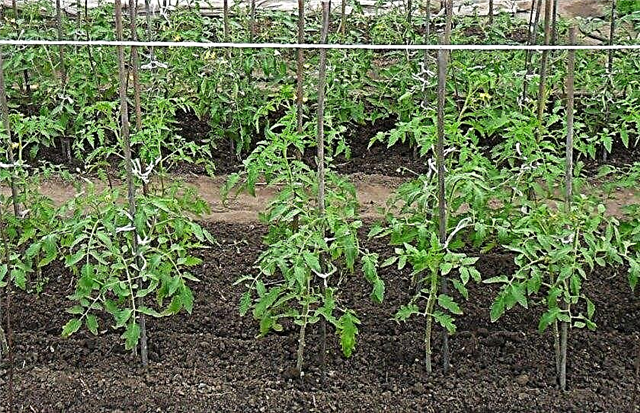
You should not grow a crop after other varieties of tomatoes, potatoes and other solanaceous, earlier than after 3-4 years. Otherwise, the soil becomes a potential carrier of a variety of infections and pest larvae. It is also worth paying attention to the neighborhood with other cultures.
Tomato perfectly withstands the neighborhood with:
- corn
- pepper;
- onions;
- garlic
- radish;
- celery;
- parsley;
- watermelon;
- melon
- asparagus
- beans.
Adverse effects on tomato beds are the neighborhood with:
- other varieties of tomatoes;
- peas;
- potatoes;
- cabbage;
- cucumbers;
- grapes;
- turnips.
Important! Before planting tomatoes, stands must be fertilized with green manure. To do this, back in the fall, the plot is sown with legumes (alfalfa, sainfoin, clover, etc.), which are mowed and plowed into the soil 2 weeks before planting.
Preparing and planting seeds
In order to achieve from tomatoes not only high yields, but also excellent taste, you need not only special preparation, but also further compliance with the optimal microclimate for young shoots. Without this, crops will suffer from low immunity, which almost always threatens them with death.
Seed preparation
Seed preparation begins with sterilization. This measure is mandatory, since only with the help of sterilization can the pathogens of various fungal infections be eliminated from the surface of the seeds. For this, the seed is soaked in special bactericidal solutions, most often for this purpose 2% potassium permanganate or 70% alcohol solution is used. In the first case, the seeds are soaked for 20 minutes, when using alcohol - no more than 10 minutes.
To improve the quality of seedlings, immediately before sowing the seeds must be soaked in growth stimulants for 6-8 hours. Most often, solutions of "Humate of sodium", "Kornevin" or "Zircon" are used for this. Replace chemicals with aloe juice. To do this, it is mixed with clean water at room temperature (1: 1), while soaking in an organic solution is extended to 24 hours.
Sowing seedlings
Sowing seeds is usually carried out in small garden trays or plastic boxes with a depth of at least 10 cm. To do this, use any specialized garden substrate for seedlings. Replace it with a mixture of equal parts of turf land, peat and sand.
Sow seeds in common rows or individual wells.- In the row-wise method, rows with a row spacing of 3-4 cm are created over the entire surface of the container. Sowing is carried out so that in the future there is at least 1-2 cm free space between the seeds.
- With the hole method, holes are made in the soil at a distance of 3-4 cm, 2-3 seeds are placed in each of them, of which only one sprout leaves over time.
Regardless of the type of sowing, the depth of the seed should be within 1-2 cm.

Growing seedlings
Sown containers moisten well, and then cover with a dome made of transparent polyethylene or glass. After that, they are transferred to a well-lit place, with a temperature of about + 25 ° C. The south or southwest window sill is best suited for this, since the most intense lighting is observed here. A week later, the first shoots appear, after which the dome can be removed; at this time, the stands are thinned out if necessary, leaving a space of 3-4 cm between each sprout.
After removing the dome, tomatoes are grown at a temperature of +18 ... + 20 ° С during the day and about + 15 ° С at night. Before transplanting to a permanent place, the plants are provided with daylight at 10-15 hours, for this the flowerpots should be illuminated with a garden or table lamp. The first week after removing the protective dome, seedlings are watered once a week, in the phase of 2-3 leaves, watering is carried out every 4 days. Water is brought into the pots in small portions, while sharp changes in soil moisture are forbidden, which are always fraught with oppression for plants.
Did you know? The leader country for growing tomatoes is China. Every year, Chinese farmers manage to get more than 50 million tons of fruits, which is one third of the world production of this vegetable.
Permanent landing
Approximately 40-50 days after the appearance of the first seedlings, tomatoes can be replanted in open soil. At this point, plants should form 6–8 leaves, and in the weather, a stable thaw with an average daily minimum of about + 15 ° C should form. Most often, this time comes no earlier than mid-May.
Seedlings are planted in a row or pit method, to a depth of 25-30 cm. A traditional planting pattern is considered 60 × 60 cm, but with a row planting, you can stick to a 70 × 40 cm pattern. Thus, about 6-8 tomatoes should be placed on 1 m² of plantings .

Cultivation and care
To achieve good quality of future tomatoes, plantings need to be paid attention after planting in open soil. Until the fruits ripen, tomato bushes require regular top dressing, as well as soil care. This helps to create a special microclimate on the beds, with the help of which the fruits will be not only large, but also tasty.
Stepson
Since the variety Andreevsky surprise is characterized by active growth of shoots throughout the growing season, plants necessarily need to be planted and formed. Pruning of bushes is carried out regularly, only in this case it is possible to avoid excessive growth of inefficient parts. The first time the procedure is carried out already 2-3 weeks after transplanting. Extra shoots are removed on each tomato, leaving no more than 2-3 main branches, however, in the conditions of thickened planting, one shoot can be left on each bush.
Subsequently, throughout the entire growing season, all stepsons formed from the leaf sinus are removed. Do this before they are extended to 4 cm, otherwise the procedure can affect the plants negatively. As the bush grows, it is also necessary to cut off the lowest tier of leaves and leaves shading fruits. In cold climates, this will help shorten the growing season to 2 weeks.Important! All places of cuts must be treated with crushed charcoal, this will help protect tomatoes from fungal damage.
Fertilizer
As mentioned above, tomatoes are fertilized at least 3 times per season:
- 2 weeks after germination;
- 2-3 weeks after transplantation;
- during flowering.

Most often used for this:
- superphosphate (15–20 g / m²);
- phosphoric flour (50 g / m²);
- potassium nitrate (15–20 g / m²).
The drugs are applied both in dry form and in the form of a solution, for this about 1 liter of water is used per 1 m². The greatest efficiency for plantations is given by the alternation of different types of preparations with organic top dressing (chicken manure solution 1:15). Also, when fertilizing tomatoes, be sure to remember that nitrogenous fertilizers for plants are contraindicated - they often activate the growth of green mass, which negatively affects yield.
Did you know? Together with tomatoes, the Solanaceae family includes such well-known, but at the same time, various crops, such as potatoes and tobacco.
Tying
Tie bushes as early as possible, most often carry out this procedure already 2 weeks after transplanting seedlings. Tomatoes are attached to a strong support, for this they use individual pegs made of wood or steel rods, which are installed at a distance of 10-15 cm from the plant trunk. Since the Andreevsky surprise is distinguished by a rather large trunk, the length of the support is chosen so that its aboveground part is at least 2 meters.
The bushes are tied to a support in the middle of the trunk or slightly higher; as the garter points grow, they move up. They fix the plants freely, so that the garter does not hinder growth, and also does not cause damage to the trunk and fruit shoots. For the procedure, tight twine made of synthetic or natural materials is used.

Watering tomatoes after planting
Although the Andreevsky surprise is able to withstand a short drought, it is necessary to water the beds regularly. The most favorable effect on the culture is moderate hydration - for this, plantings must be moistened regularly, but in small portions.
In most cases, watering is carried out no more than once a week, and during the rainy season they are reduced to 1 time in 2 weeks. For irrigation use only clean and settled water, preheated to ambient temperature. Watering the beds under the root, avoiding wetting of the leaves, otherwise an optimal environment for the development of dangerous infections is created.
Once a week, the day after watering, the plants weed. This procedure is mandatory, as it helps to saturate the soil with oxygen, as well as to protect the beds from the appearance of weeds. The soil is weeded to a shallow depth - for the first time one should be no more than 10 cm, with subsequent care weeding is carried out at 5–7 cm.Disease and Pest Prevention
Prevention of development at the site of all kinds of diseases and dangerous pests of tomatoes should begin in the fall. In October, before the first frost, the future plot for tomatoes must be carefully dug to a depth of at least 25 cm (before planting green manure). This will allow the soil to freeze well, which will destroy most dangerous insects. For the same purpose, it is necessary to collect from the site all the remains of other cultivated plants and dispose of them.
Immediately before planting seedlings, its roots should be soaked in a variety of complex means of protection. Often, Aktara solutions are used for these purposes, which will best protect tomatoes from the development of aphids, chafers and other insects.
Spraying with complex fungicidal preparations (“Quadris”, “Ridomil”) will help to resist the development of infections among plantings. Such a procedure is carried out at least 1 time per month, in dry weather and only after the complete rooting of plants (2-3 weeks after planting). Alternatively, you can use spraying with 2% potassium permanganate or dusting plants with chopped wood ash.
Important! The treatment of plantations is stopped 2 weeks before harvesting, otherwise dangerous toxins and their derivatives will accumulate in the crop.
Harvesting and storage
The first harvest of the St. Andrew's surprise variety is carried out in mid-September. The fruits ripen quite amicably, so they are removed from the plant every 2-3 days. Mass harvesting is carried out after lowering the night temperature to + 13 ° C, otherwise the tomatoes will lose their elasticity and stamina.
Harvesting of tomatoes is carried out manually, using a sharp knife or garden secateurs, which separate the stem from the main stem. If the harvested crop does not have time to ripen, it is placed in a warm and well-lit place, at a temperature of +20 ... + 25 ° С. Depending on the stage of ripeness under such conditions, the fruits withstand from 5 to 10 days, after which they become completely suitable for food.
The collected fruits are placed in cardboard or plastic boxes in several layers, and then moved to a cold and dry place with a temperature of 0 ... + 10 ° C, under such conditions, the crop is able to maintain its freshness for several weeks. A special vegetable storehouse is best suited for these purposes, but you can keep the crop in the refrigerator.
St. Andrew’s surprise is a high-yielding modern hybrid that can please the gardener not only with large fruits, but also with the excellent taste quality of the crop. The variety is considered unpretentious, but for successful cultivation, tomatoes need timely and painstaking care. Including prophylactic treatments against infections and pests, without which the effectiveness of crop cultivation will be reduced significantly.



